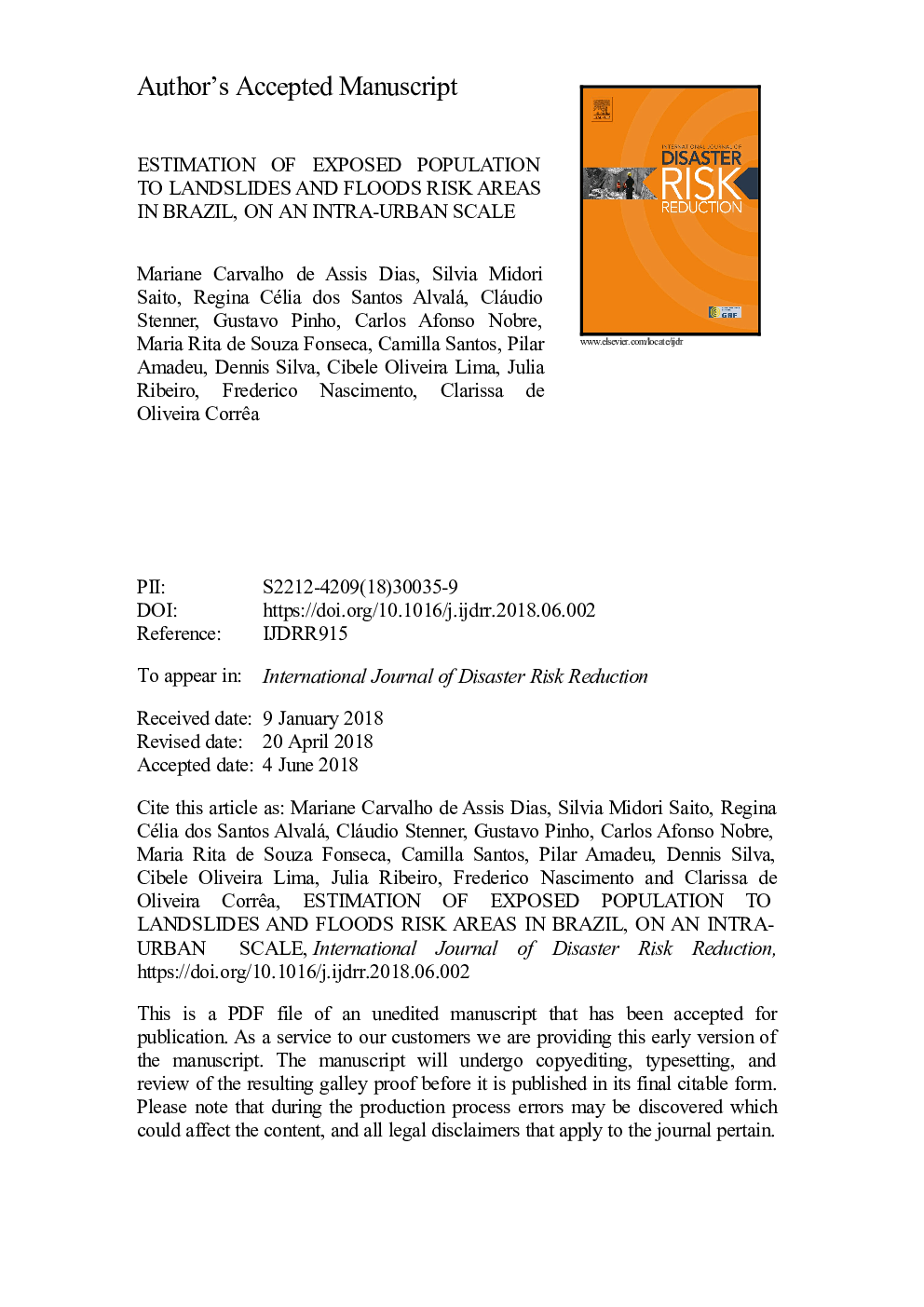| Article ID | Journal | Published Year | Pages | File Type |
|---|---|---|---|---|
| 7471159 | International Journal of Disaster Risk Reduction | 2018 | 30 Pages |
Abstract
The knowledge on population demographics and the living conditions in risk areas are crucial for risk management and disaster response. In Brazil, this information is not available yet on a national scale. With the goal of characterizing at risk populations, in the present article a methodology is proposed to associate demographic census data with risk areas for landslides and floods in Brazil. The unique source of information about the Brazilian population, available for the entire country, in intra-urban scale, is provided by the Population Census developed by the Brazilian Institute of Geography and Statistics. However, the association of census information with risk areas cannot be done in a direct and automated way, due to the different geometries between the risk areas and census tracts. Considering the need to associate data from distinct geometries, a new basemap was created, named Statistical Territorial Base of Risk. Its graphical delimitations incorporate information from the population census about the mapped risk areas. The proposed methodology was initially implemented in three pilot municipalities located in the state of Rio de Janeiro (Petrópolis, Teresópolis and Nova Friburgo). The results show the estimation of approximately 155.000 people exposed to the risk of landslides and/or floods in 1.357 risk areas. It also allowed for the identification of regions within those municipalities with the highest concentration of at-risk population. The availability of information on the conditions of exposure of populations residing in risk areas can subsides decision makers in the context of disaster risk management.
Related Topics
Physical Sciences and Engineering
Earth and Planetary Sciences
Geophysics
Authors
Mariane Carvalho de Assis Dias, Silvia Midori Saito, Regina Célia dos Santos Alvalá, Cláudio Stenner, Gustavo Pinho, Carlos Afonso Nobre, Maria Rita de Souza Fonseca, Camilla Santos, Pilar Amadeu, Dennis Silva, Cibele Oliveira Lima, Julia Ribeiro,
